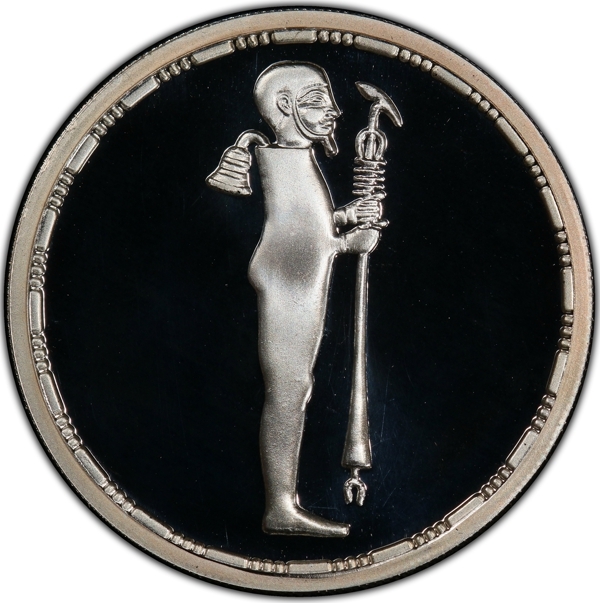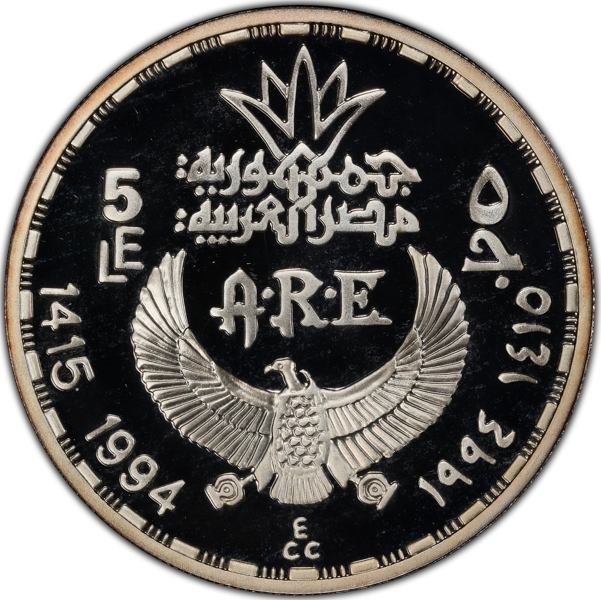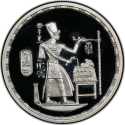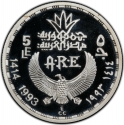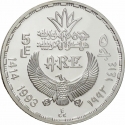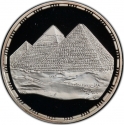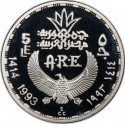You are about to finish your registration. Please check your mailbox (including spam folder). There should be a letter with a confirmation link. Check setting to make sure that your e-mail address is correct.
Send letter againDescription
Ptah is an ancient Egyptian deity, a creator god and patron of craftsmen and architects. In the triad of Memphis, he is the husband of Sekhmet and the father of Nefertem. He was also regarded as the father of the sage Imhotep.
Ptah is an Egyptian creator god who conceived the world and brought it into being through the creative power of speech. A hymn to Ptah dating to the Twenty-second Dynasty of Egypt says Ptah "crafted the world in the design of his heart," and the Shabaka Stone, from the Twenty-Fifth Dynasty, says Ptah "gave life to all the gods and their kas as well, through this heart and this tongue."
Obverse

|
Depicts standing god Ptah. |
|---|---|
Reverse

|
Stylized state name (Arab Republic of Egypt) divides denomination in Arabic and English and abbreviation of state name (A.R.E.) below, the date in Arabic (Hijri) and Western (Georgian) divides by a vulture with open wings. Engraver's initials (ECC) below. 5 ٥ جمهورية مصر العربية |
| Edge |
